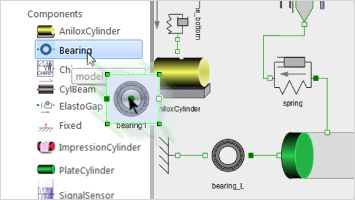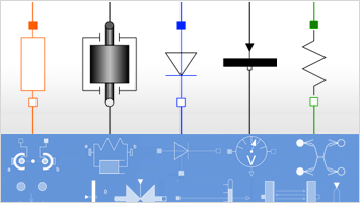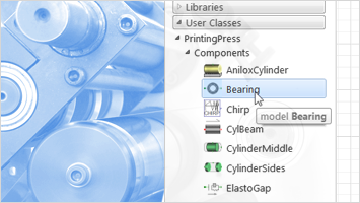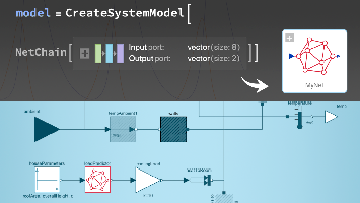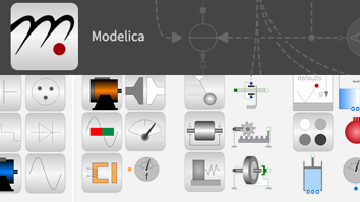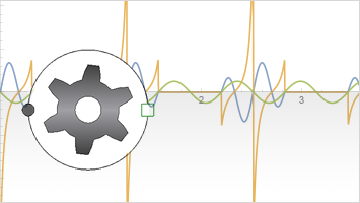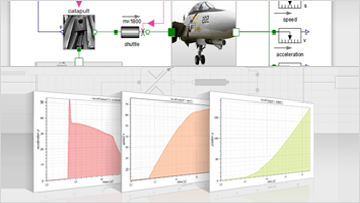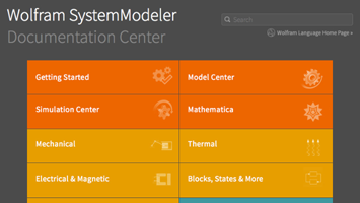Drag, Drop & Connect
Quickly and intuitively create models using System Modeler's drag-and-drop approach. Pick up components like transistors or springs and drop them onto the canvas.More
Draw lines between components to indicate physical connections like electrical wiring or mechanical attachment. Click components to specify parameters, units and configuration.Less
